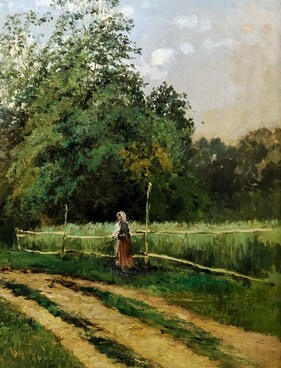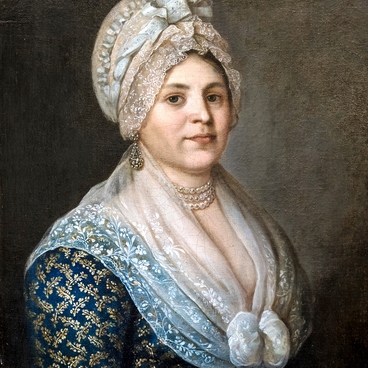Apart from bringing new forms of art into the portrait genre, Romanticism also influenced the content of numerous anonymous portraits, which embraced many stylistic features of this trend.
The work by an unknown artist belongs to the genre of intimate portrait. As a rule, an intimate portrait was commissioned, but it could also be painted of the artist’s own volition. Such paintings were initially intended to portray influential figures and people of art. Later, artists started painting intimate portraits of ordinary people as well.
The idea of a free person, not confined within the boundaries of class and social standing, was embodied in portraits of the first third of the 19th century. This perception is associated with the advent of the Romanticism style and its new approach to the portrait genre.
The sitter is a representative of the nobility, whose images held an important place in the portraits of that time and were close in their characteristics to a certain ethical and aesthetic ideal, established in the era of Romanticism.
In the “Portrait of a Young Man Wearing a Black Tie”, the traditional type of a head and shoulders portrait, devoid of accessories and details of the interior, has some new features in its composition: the figure is depicted against a light neutral background and is somewhat shifted to the side away from the center, and the head is slightly thrown back. The small format of the portrait suggests a reduced distance between the viewer and the sitter, which is intended to establish true intimacy.
The composition and color palette of the portrait emphasize the man’s face as the main part of the image, which is not overshadowed even by the meticulous detailing of his clothes. The dignified posture and the choice of clothes are intended to present the man as a true gentleman. The black tailcoat, which was in fashion in the 1830s, the elegant white vest and exquisite buttons are all indicators of the high status of the portrayed person.
At the same time, the pale high forehead and flying hair suggest that the sitter may come from the intellectual milieu, and the gloomy black color of the tailcoat points to the idea of the finitude of life, which was widely romanticized by intellectuals at the time.
The absence of contact between the portrayed person and the viewer is an important element, which indicates a conflict existing between the man’s inner world and the reality that surrounds him.
The portrait is devoid of any attributes that could potentially help the researcher and the viewer to get a better glimpse into the sitter’s personality but instead leaves room for a broad interpretation of the image.


